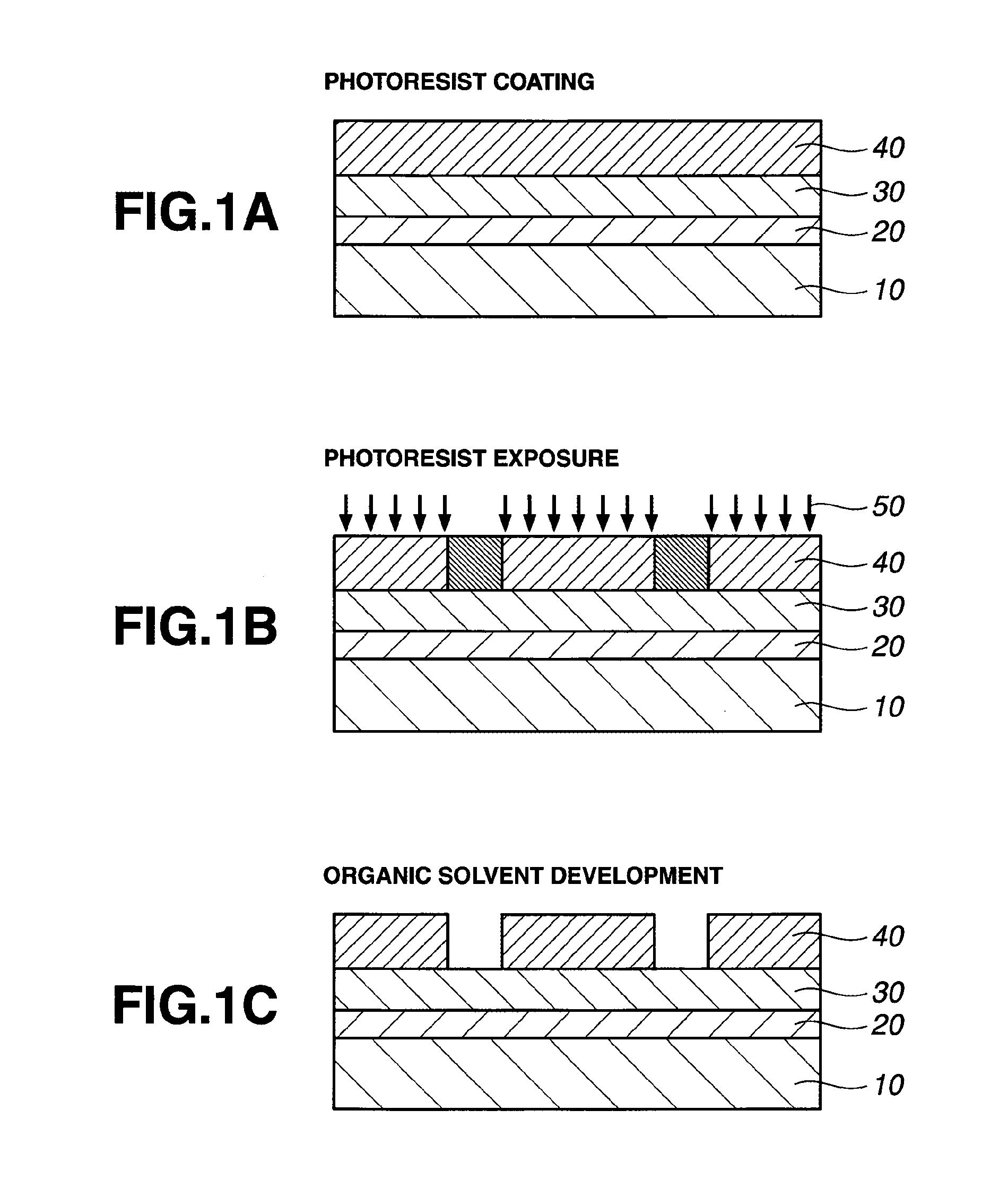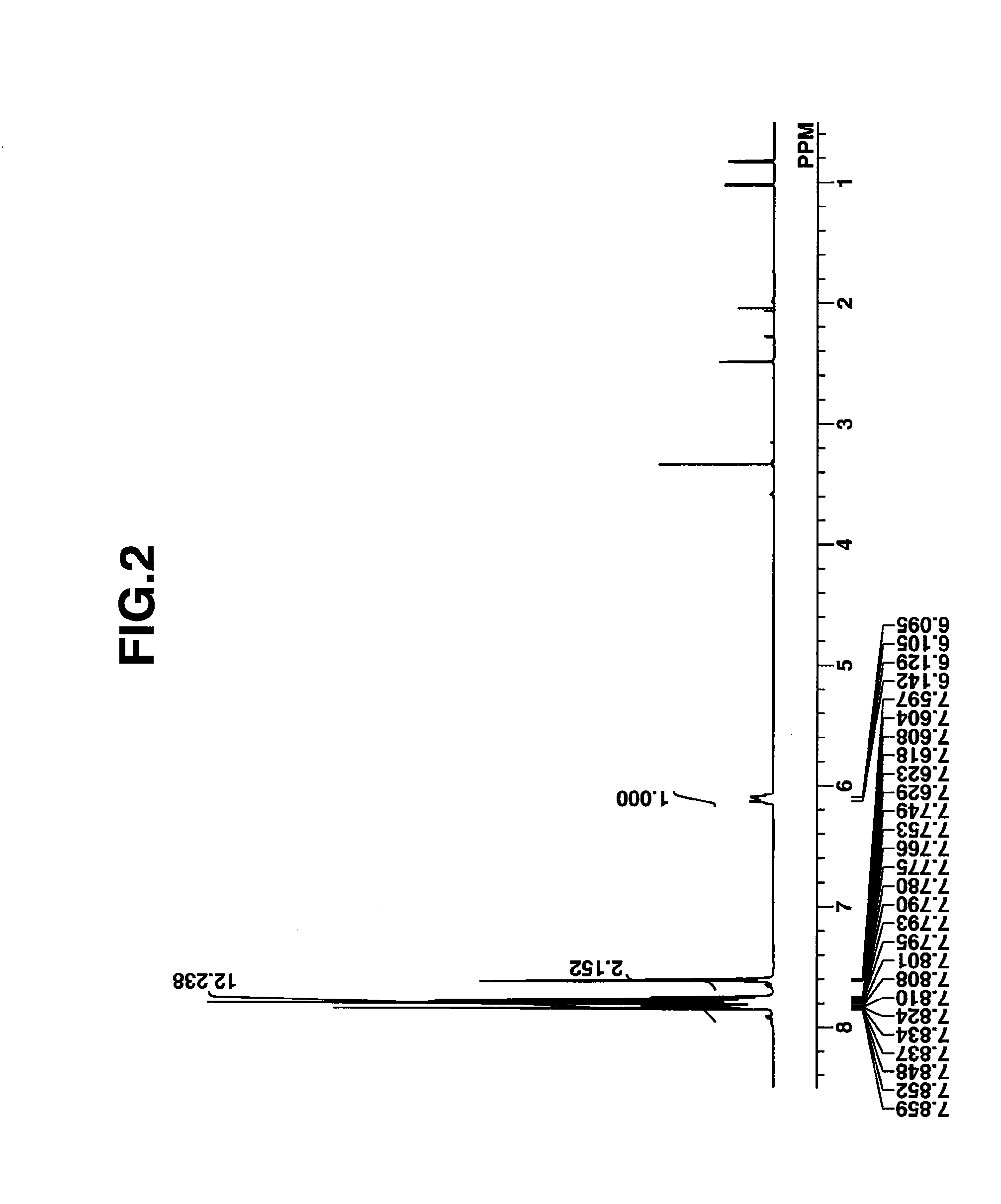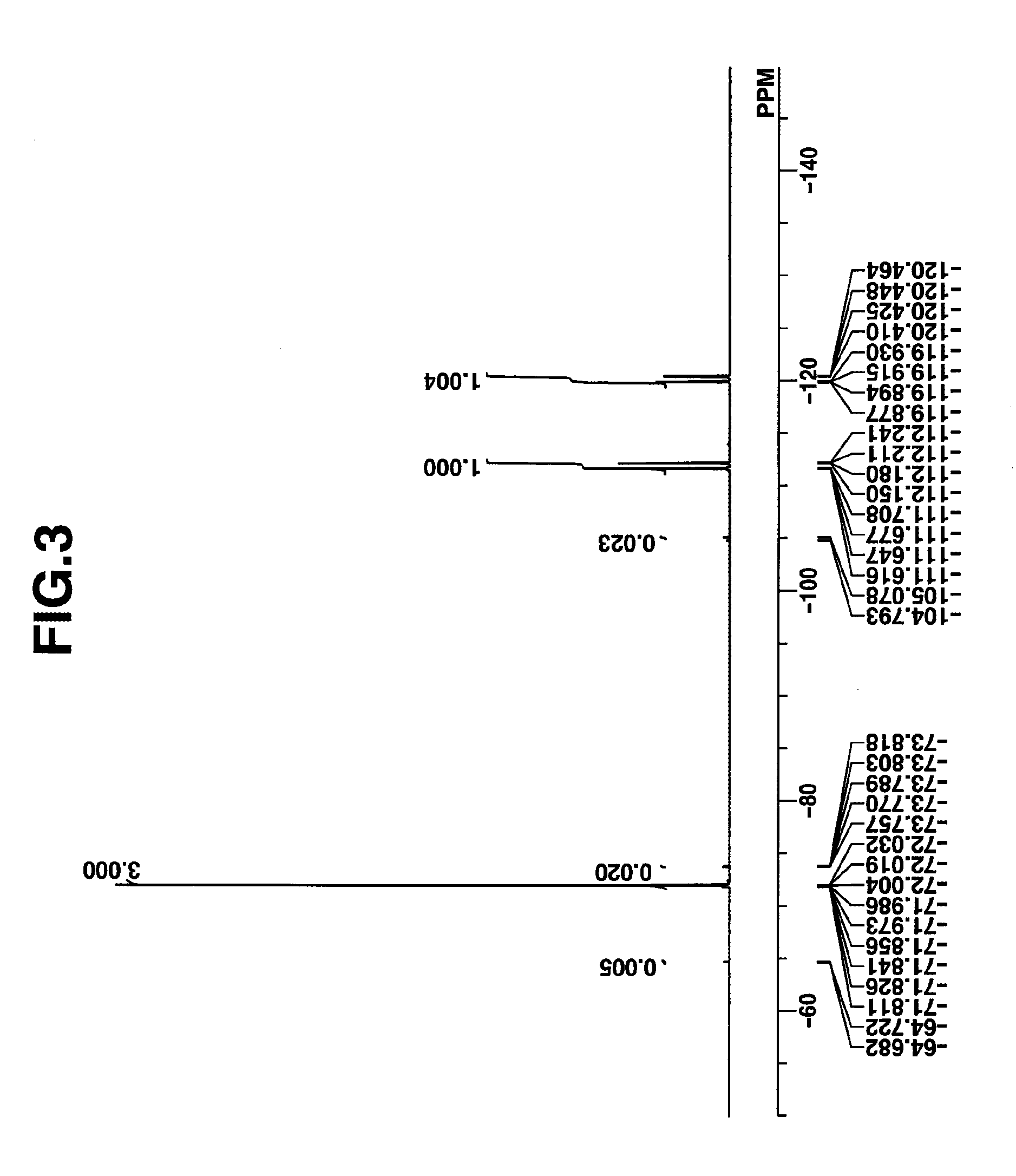Patterning process and resist composition
a resist composition and patterning technology, applied in the field of pattern formation process, can solve the problem of not having a sufficient margin, and achieve the effect of improving resist performance factors and high dissolution contras
- Summary
- Abstract
- Description
- Claims
- Application Information
AI Technical Summary
Benefits of technology
Problems solved by technology
Method used
Image
Examples
synthesis example 1
Synthesis of PAG
[0158]PAGs used in Examples were synthesized in accordance with the formulation shown below.
synthesis example 1-1
Synthesis of 4-(1,1,3,3,3-pentafluoro-1-sulfonatopropan-2-yloxy)phenyldiphenylsulfonium (PAG-1)
[0159]
[0160]In 1,200 g of THF was dissolved 153 g of 4-fluorophenyldiphenylsulfonium 1,1,3,3,3-pentafluoro-2-hydroxypropane-1-sulfonate which had been synthesized by the method of JP-A 2012-107151 (US 20120129103). Under ice cooling, this solution was added dropwise to a mixture of 7.2 g of sodium hydride and 1,200 g of THF. The reaction solution was aged overnight, after which 1,200 g of 1 wt % hydrochloric acid was added to quench the reaction. The reaction solution was concentrated to remove THF. To the concentrate, 1,000 g of MIBK and 125 g of methanol were added, after which the organic layer was separated. The organic layer was washed with a mixture of 800 g of 2 wt % hydrochloric acid and 90 g of methanol, further washed 5 times with 900 g of 10 wt % methanol in water, and concentrated. To the concentrate, 200 g of acetone and 600 g of diisopropyl ether were added for crystallizatio...
synthesis example 1-2
Synthesis of bis(4-tert-butylphenyl) sulfoxide (PAG Intermediate 1)
[0164]
[0165]Under ice cooling, a mixture of 60 g thionyl chloride and 60 g THF was added dropwise to a Grignard reagent prepared from 213 g of 1-bromo-4-tert-butylbenzene. The reaction solution was aged for 30 minutes, after which under ice cooling, 730 g of 5 wt % hydrochloric acid was added dropwise to quench the reaction. Methylene chloride (1,000 g) was added to the reaction solution, from which the organic layer was separated. The organic layer was washed with water and concentrated in vacuum. Hexane was added to the concentrate for recrystallization. The resulting crystals were collected by filtration and dried in vacuum, obtaining 92 g of the target compound, bis(4-tert-butylphenyl) sulfoxide as white crystals. Yield 58%.
PUM
| Property | Measurement | Unit |
|---|---|---|
| wavelength | aaaaa | aaaaa |
| wavelength | aaaaa | aaaaa |
| wavelength | aaaaa | aaaaa |
Abstract
Description
Claims
Application Information
 Login to View More
Login to View More - R&D
- Intellectual Property
- Life Sciences
- Materials
- Tech Scout
- Unparalleled Data Quality
- Higher Quality Content
- 60% Fewer Hallucinations
Browse by: Latest US Patents, China's latest patents, Technical Efficacy Thesaurus, Application Domain, Technology Topic, Popular Technical Reports.
© 2025 PatSnap. All rights reserved.Legal|Privacy policy|Modern Slavery Act Transparency Statement|Sitemap|About US| Contact US: help@patsnap.com



